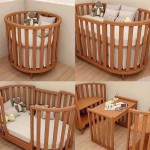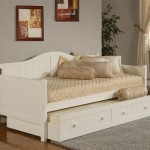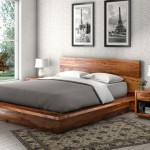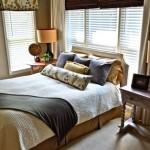Bedroom Size for a Queen Bed: Achieving a Perfect Balance
When designing your bedroom, the size of your bed is a crucial consideration. A queen bed, known for its ample proportions, offers a comfortable sleep experience for individuals and couples. Determining the appropriate bedroom size for a queen bed is essential to create a harmonious and functional space.
Room Length and Width for a Queen Bed
To accommodate a queen bed comfortably, it is generally recommended to have a bedroom that is at least 10 feet long and 10 feet wide. This provides sufficient space to walk around the bed, move freely, and place nightstands or other furniture.
For a more spacious feel, a bedroom with dimensions of 12 feet long and 12 feet wide is ideal. This allows for ample room to accommodate a queen bed, dresser, nightstands, and other furnishings without feeling cramped.
Calculating Total Floor Space
Multiply the length and width of your bedroom to determine the total floor space in square feet. For example, a bedroom measuring 10 feet long and 10 feet wide has a floor space of 100 square feet.
As a general guideline, aim for a bedroom with a floor space of at least 100 square feet for a queen bed. This provides sufficient space to move comfortably and arrange furniture without overcrowding.
Furniture Considerations
In addition to the bed, consider the space required for other furniture in your bedroom. Nightstands, a dresser, and a mirror are common items that need to be accommodated.
Allow at least 2-3 feet of space between the bed and other furniture to facilitate movement and create a comfortable flow within the room.
Ceiling Height
Ceiling height plays a role in determining the overall spaciousness of a bedroom. A bedroom with a high ceiling tends to feel more airy and expansive, even with a smaller floor space.
For bedrooms with standard 8-foot ceilings, a queen bed can be accommodated comfortably as long as the length and width of the room meet the recommended dimensions.
Layout and Shape of the Room
The shape of the room can also impact the perceived spaciousness of the bedroom. A square or rectangular room tends to be more functional than a room with a more irregular shape.
If you have a long and narrow bedroom, consider placing the bed against a short wall to create a more balanced look and feel.
Conclusion
Determining the appropriate bedroom size for a queen bed involves considering factors such as room length, width, floor space, furniture considerations, ceiling height, and layout. By following the general guidelines outlined above, you can create a bedroom that is both comfortable and visually appealing, providing you with a restful and serene sleep experience.

Stressed Out Over A Queen Bed In 10 X Bedroom Here S 8 To Help Michael Helwig Interiors

Queen Size Bed Dimensions Amp Layout Ideas For A Small Bedroom

Bed Guide 5 Tips On Choosing The Right Size Mattress Archdaily

Queen Size Bed Dimensions Amp Layout Ideas For A Small Bedroom

Queen Size Bed Dimensions Amp Layout Ideas For A Small Bedroom

Queen Size Bed Dimensions Amp Layout Ideas For A Small Bedroom

The Difference Between A Queen And King Bed Bedinabox

Queen Size Bed Dimensions Amp Layout Ideas For A Small Bedroom

Queen Bed Dimensions How Big Is A Parachute Blog

Choosing The Perfect Rug Size For Your Queen Bed Expert Tip Gallery







